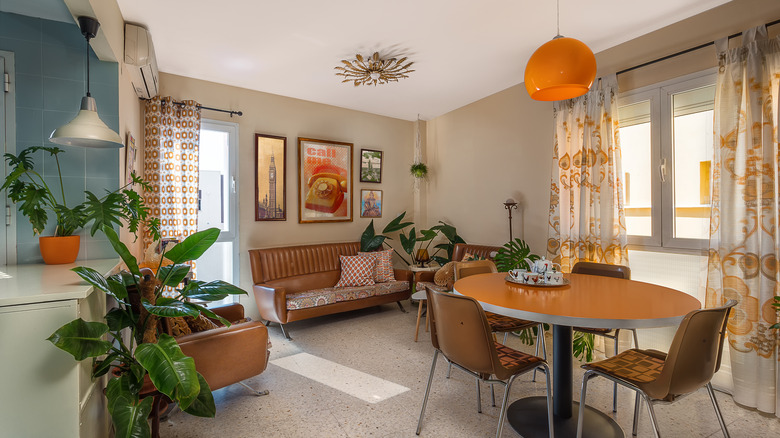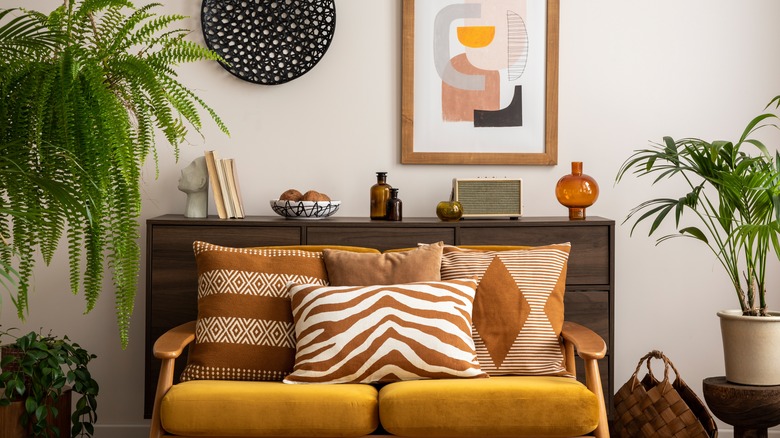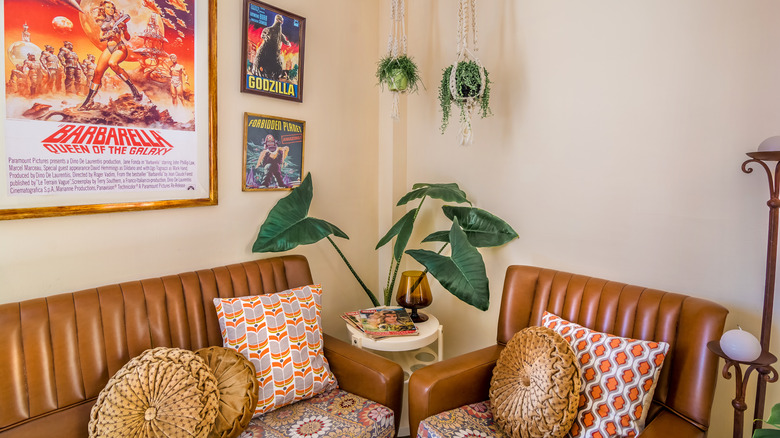The Retro Decor Era That's Making A Huge Comeback
The trend cycle will never stop moving. That's why designs everyone once loved now look horribly dated, and others many thought they'd never see again are currently the most sought-after. Whether or not you believe there is anything new to create, you can't deny the cyclical nature of trends. According to Design Pool, there are five stages in the trend life cycle: introduction, increase, peak, decline, and obsolescence. Certain details, colors, and materials rise in popularity before giving way to something else and eventually lying dormant before being surged and returning to start the cycle again.
How long the trend lasts depends on the type of trend, says Design Baddie. Micro trends are usually small pieces that only last three to twelve months in popularity. While larger macro and megatrends can last three to ten years, respectively. These categories tend to apply to overall aesthetics and design movements rather than specific pieces of décor or materials. Knowing the trend cycle, it's no surprise that certain eras and decades find their way back to popularity after going out of style. According to Who What Wear, nostalgia plays a huge part in resurgence. And the love for this retro decade has it rising in the trend cycle.
The '70s are surging
The '70s evoke a lot of nostalgia, even for those who weren't alive in the decade. Many connect to the music and fashion of the time, and that love of the culture is beginning to influence how many decorate their homes. '70s-inspired interiors are surging, making vintage pieces from this decade some of the most sought-after in the current furniture market. According to Who What Wear, furniture and décor from this decade has seen the highest growth year after year.
People are drawn to the colorful, comforting, and nature-inspired homes of the '70s. But the decade's popularity in current years kind of makes sense. The original '70s style may have been in reaction to the clean and minimal look of midcentury design, according to designer Gary McDaniel, per In Register. The midcentury style employed neutral colors, minimal fabrication, and little décor. Those seeking a new look may have felt drawn to the vivid colors and bold prints that characterized the '70s.
This might sound familiar in the current trend cycle. Just a few years ago, all-white and all-gray interiors with clean lines and few furnishing were dubbed contemporary modern style. In the present day, many are rejecting that simple look for more colors and patterns. As decorating in only neutrals has fallen by the wayside in favor of warm colors and tones, it's a reminder that trends–even movements–are cyclical.
Give your home the '70s treatment
There aren't many people who opt to make their home look like a '70s time capsule. Though many are looking to source vintage pieces from antique stores, flea markets, and online resellers, most want to evoke the vibe of this retro decade. One of the most recognizable trademarks of the '70s is vibrant color schemes of highly saturated shades, according to Public Goods. It wasn't uncommon to find bold reds, yellows, blues, and greens all occupying one space or room, completed top to bottom in bright colors. Graphic floral wallpaper, shag carpet, and wood furniture were also popular at the time. Luckily, these details are currently trending both with and without the resurgence of the '70s.
You can recreate the '70s with modern pieces, but adding an antique touch creates something more interesting. Check out antique shops, estate sales, and online marketplaces for unique pieces for your home. "The pieces I NEED to own with my entire soul are a leather convertible sleeper sofa by De Sede or an Alessandro Becchi sofa bed," content creator and interior decorator Kellie Brown tells Who What Wear. According to Eco Hugo, brands like Mcintosh, Schreber, and Stonehill are ones to look for when shopping for antique pieces.


